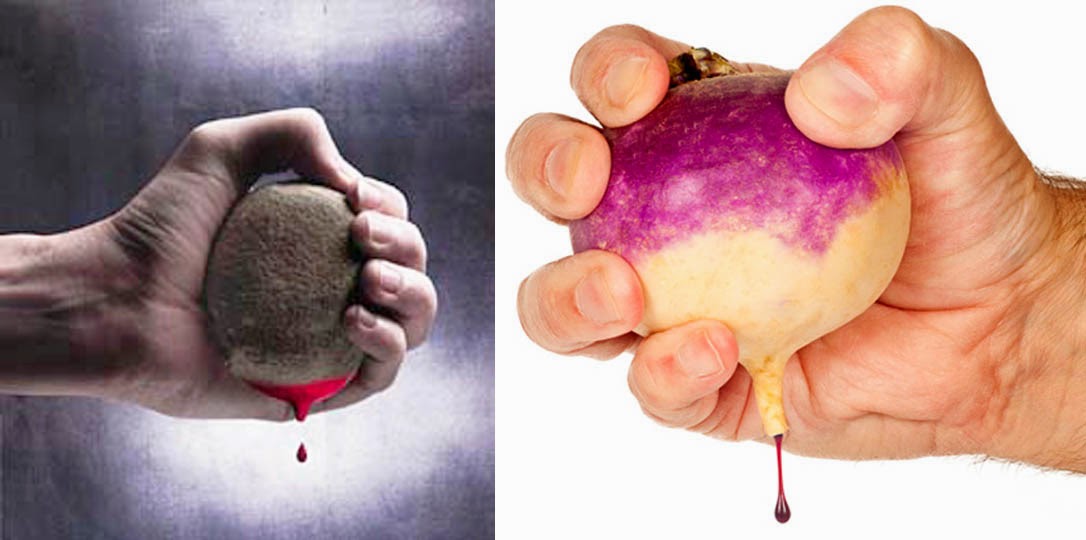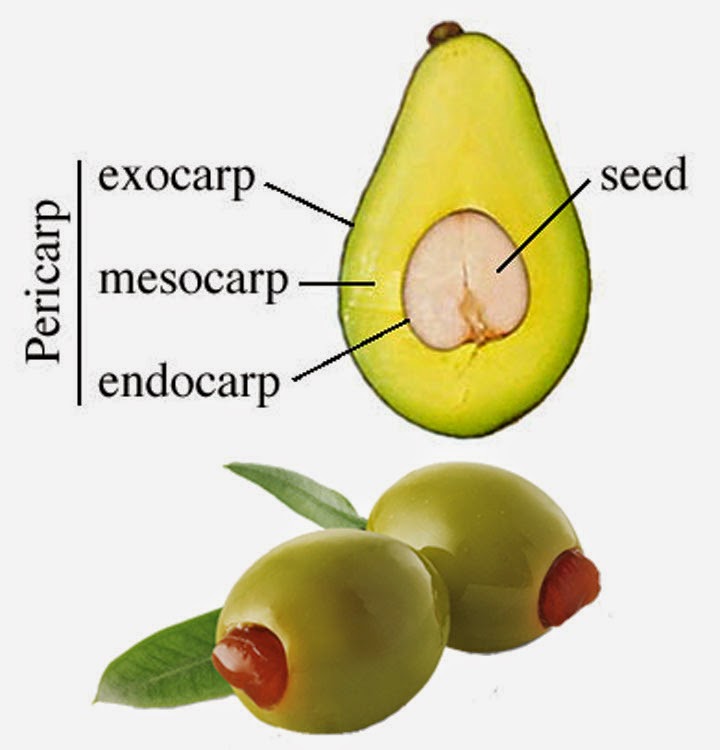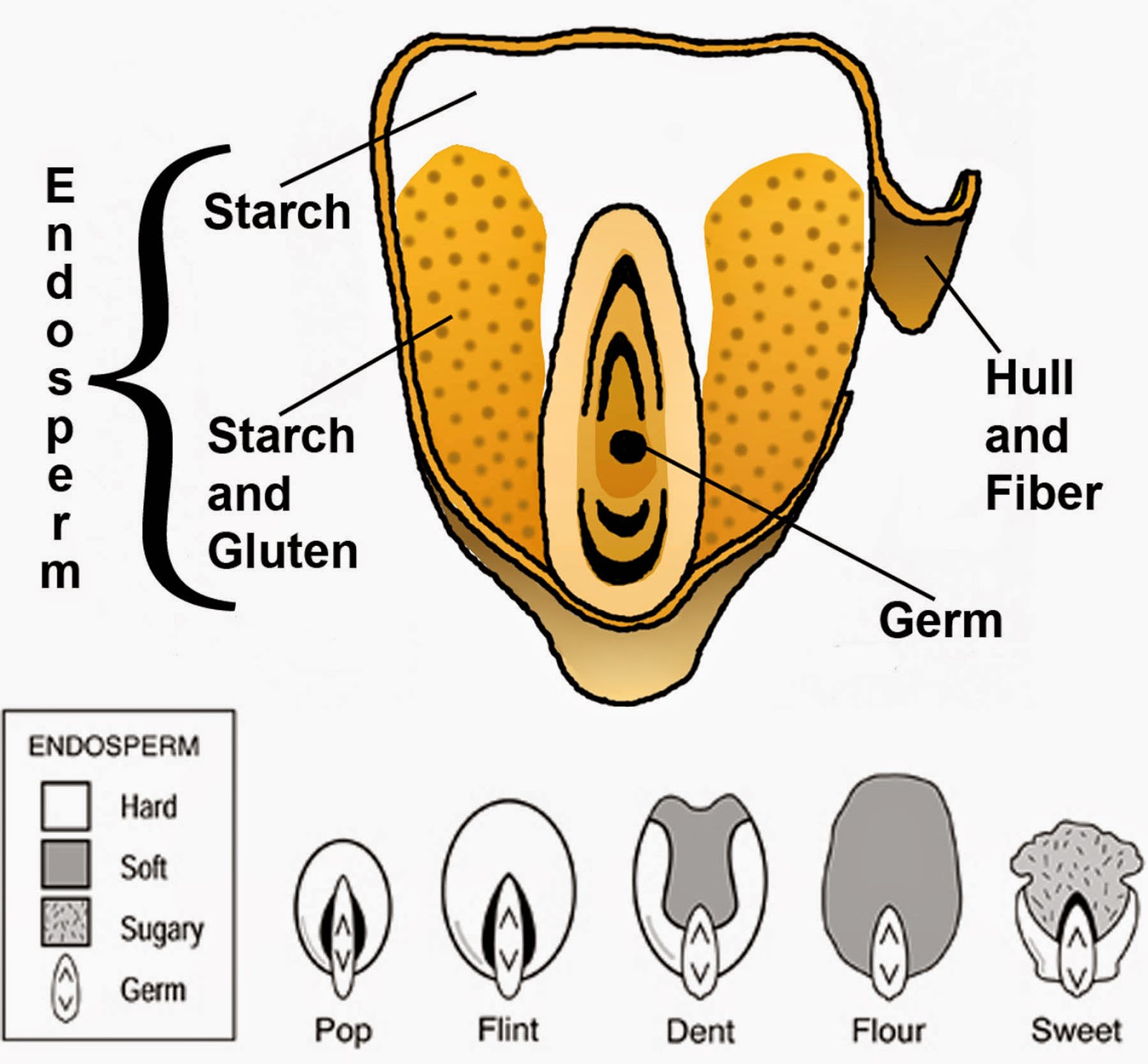Biology concepts – lipid, saturation, fruit, vegetable, drupe, berry, mesocarp, cotyledon, tuber, fatty acid, triglyceride
Carvajal-Zarrabal O, Nolasco-Hipolito C, Aguilar-Uscanga MG, Melo Santiesteban G, Hayward-Jones PM, & Barradas-Dermitz DM (2014). Effect of dietary intake of avocado oil and olive oil on biochemical markers of liver function in sucrose-fed rats. BioMed research international, 2014 PMID: 24860825
You can’t harvest what isn’t there, so that leads to today’s question. If plants are low fat sources of nutrition, how can we use them for cooking oils? There’s corn oil, sunflower oil, cottonseed oil, canola oil, rapeseed oil, olive oil, even coconut oil. How can such low fat organisms provide us with so much fat?
Of course every cell has fats – there are the phospholipids in the cell membrane, and phytophormones made from lipids help the cells communicate and the plant respond to stimuli. Thylakoid membranes for photosynthesis have a lipid (MGDG) that normally doesn’t form a bilayer, but does in the thylakoid. Please refer to this post to show that lipids have a role in almost every cellular activity.
Unfortunately, we don’t get oil from the whole plant, just a little part of it. And even more amazing, the part we get oil from only exists for a short time in the plant’s yearly cycle. When we say vegetable oil, we really mean fruit oil.
The fruit is the part of the plant that grows from the flower after fertilization, including the seed(s). The vegetable is all the other parts of the plant, including the flower bud before it is fertilized. Now you know the true difference between fruits and vegetables.
The fat in plants is almost always associated with its attempt to reproduce itself. Part of the fruitmay be fatty, the seed of the fruit may be fatty, or even the germinating plant inside the fruit could be the source of the fat.
Avocados are also pressed for oil. In locales where olives are harvested part of the year, avocados can be harvested year round, so many olive oil producer make avocado oil when the olives aren’t in season. Even though we use the mesocarp of each fruit for oil, the olive is a type of fruit called a drupe, while the avocado is actually a single-seeded berry. The avocado is just about the only berry from which we harvest edible oil.
In people with metabolic and liver function changes due to diabetes or other parts of a metabolic syndrome, it is known that the monounsaturated fatty acids in olive oil help to normalize many biochemical markers of liver function in people with metabolic syndrome. A 2014 study now expands that to avocado oil. It contains many monosaturated fatty acids, and the researchers found that it has similar positive effects on biochemical metabolic markers as compared to olive oil.
Oil palm (Elaeis guineensis or E. oleifera) fruit are also high in fat. The mesocarp is pressed to make palm oil that is used for eating and cooking, especially in Africa. The seed (kernel) can also be harvested for oil, and this is called palm kernel oil. The differences between the oil from the mesocarp and from the kernel lie in their color (the fruit oil is reddish while the kernel oil is colorless) and the percentage of saturated fats. The kernel oil is higher in saturated (no double bonds) fat.
These differences have an good side for us. Palm kernel oil esters have been shown to pass the blood brain barrier (BBB, see this post) better than other oil esters. So in a 2013 study, the palm kernel esters were combined with the antibiotic chloramphenicol. The resulting emulsion showed properties that could make it useful for treating bacterial meningitis, because more of the antibiotic could be carried across the BBB.
The coconut meat is the endosperm of the seed – the more it grows, the more of the liquid endosperm (coconut milk) turns solid. It turns solid because it is more saturated fat, and like most saturated fats it is more likely to be solid at room temperature. Coconut oil is sometimes used in place of butter.
Other “vegetable” oils come from different parts of the fruit. Sunflower oil uses the entire seed, including the embryonic plant, the endosperm and skin layers – outer (exocarp) and inner (endocarp).
Canola oil is pressed from the seeds of the canola plant. Canola is a plant bred from a type of rapeplant, a member of the mustard family. Therefore, there's a really no difference between rapeseed oil and canola oil. The name "canola" was thought up in the 1970’s, using “Can” from Canada, because that is where it was developed, and “ola” as a term for oil. The word “rape” didn’t seem to help sales.
It occurs to me that the examples above are equal and opposite. On one hand, the fat of peanuts, soybeans, sunflowers, rapeseeds, and coconut serve to nourish the embryonic plant. Fat is a great idea for this function because it stores a large amount of energy in a small volume. Carbohydrates require water for storage, so they take up more room.
On the other hand, the fat of avocados, palm oil fruits and olives are enticements to other animals to eat the fruit. Why do the fruits “want” to be eaten, anthropomorphism aside? The answer - to disperse the seeds held within or on the fruits.
New plants do better when they are far enough away from the parent plant that they will not have to compete with them for resources and sunlight, especially since they will be smaller and in the shade. This is why seeds need to be dispersed. Nourishment for itself or nourishment for a predatory animal, these are two completely different functions for the fat, but both are held in the fruit.
Yes, corn it is, both as your popcorn and the margarine you slather all over it. We already know that corn is amazing (see this post), but only 10% of corn is fat (dry it and 20% is fat). The sweet corn you eat is a special hybrid that contains more endosperm and less fat, but dent corn is the one used for making oil and feeding livestock. The corn kernel is mostly starch and glucose, but the embryonic plant has the fat. This is called the corn germ and is the only part used to make oil. The germ contains the cotyledon (called a scuttelum for corn) that stores fat for the germinating plant (get it? Germ = germinating plant)
Look at the bottom picture to see how small the germ of the corn kernel is. Because of this, it takes 40 bushels of dried dent corn kernels (at 56 pounds/bushel) to make 500 ml (0.85 lb) of corn oil! It must be cheap to grow corn because that isn’t a very good ratio, yet corn oil isn’t that expensive.
The tubers are fairly high fat, and they’re a heck of a lot larger than corn germ. On a per plant basis, sedge produce much more oil, which will make C. esculentus a cheaper source of fuel if farmed on a global scale. In truth, since sedge oil comes from a part of the plant other than the fruit, it’s the only true “vegetable” oil we talked about today. I wonder - could we get oil from a turnip? Maybe that’s the blood we should be looking for.
Next week, we'll start a series of posts on just how bacteria get around using flagella. Can flagella be used to prove the existence of a universal designer?
Next week, we'll start a series of posts on just how bacteria get around using flagella. Can flagella be used to prove the existence of a universal designer?
Musa SH, Basri M, Masoumi HR, Karjiban RA, Malek EA, Basri H, & Shamsuddin AF (2013). Formulation optimization of palm kernel oil esters nanoemulsion-loaded with chloramphenicol suitable for meningitis treatment. Colloids and surfaces. B, Biointerfaces, 112, 113-9 PMID: 23974000




